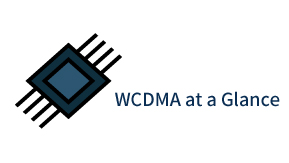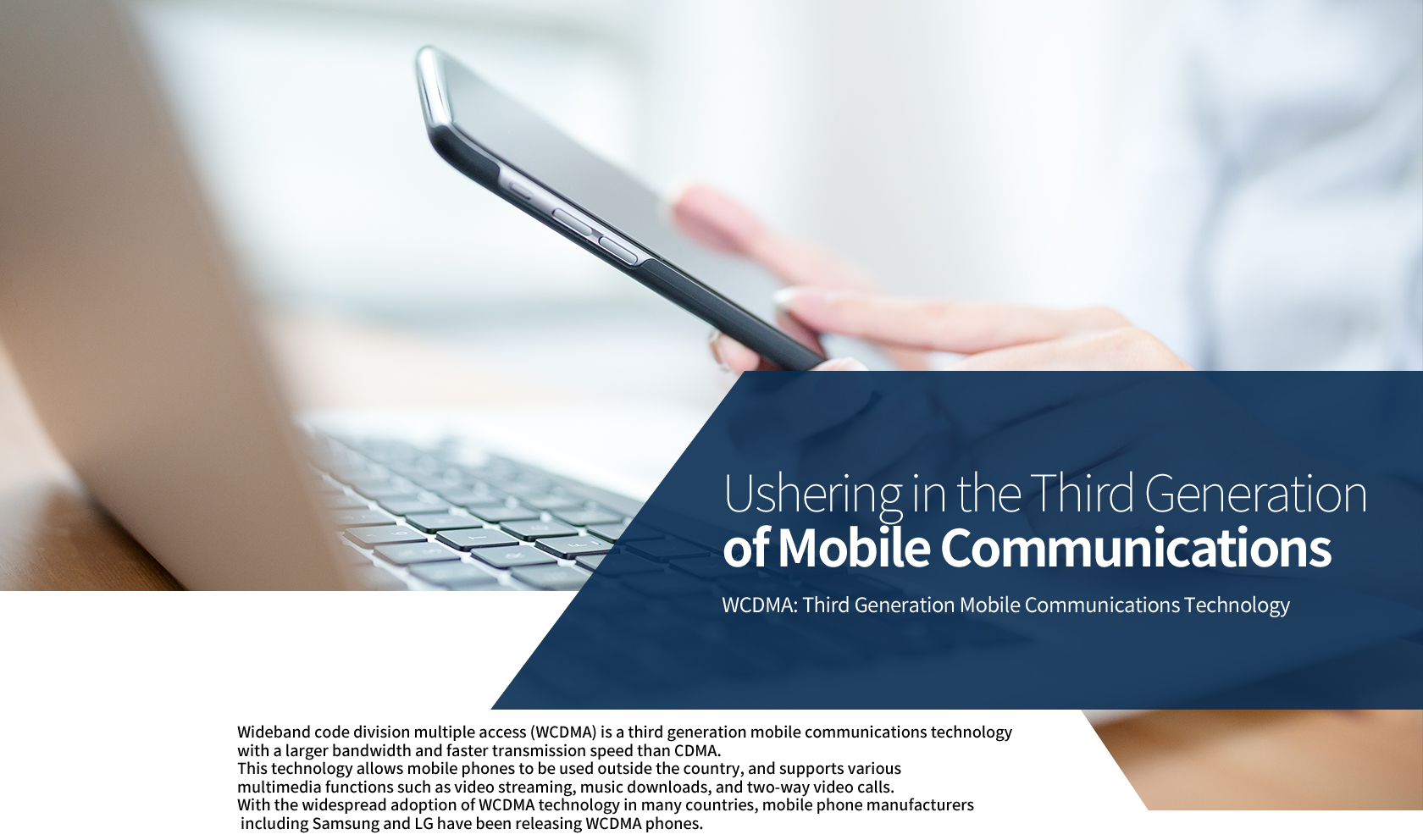
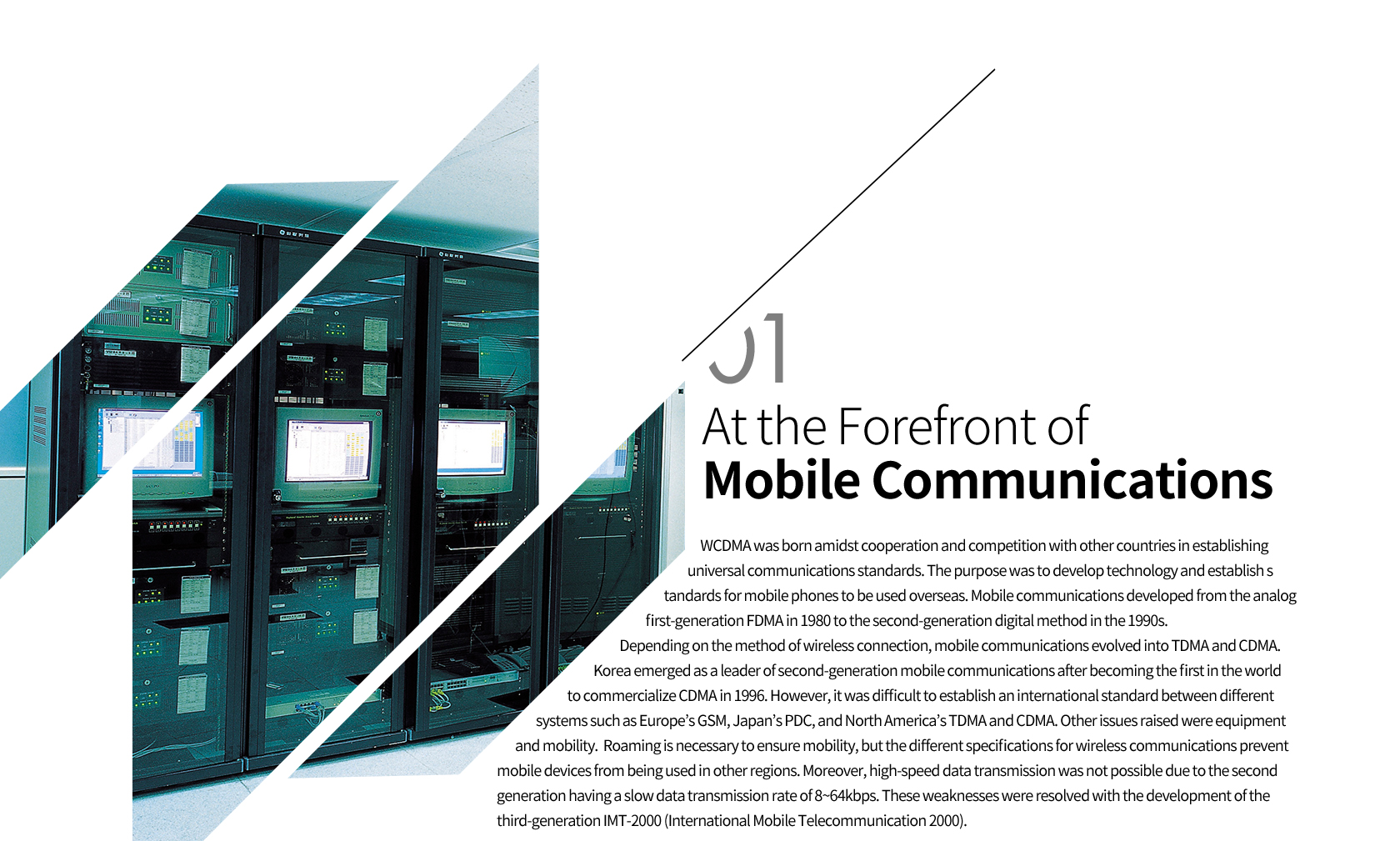
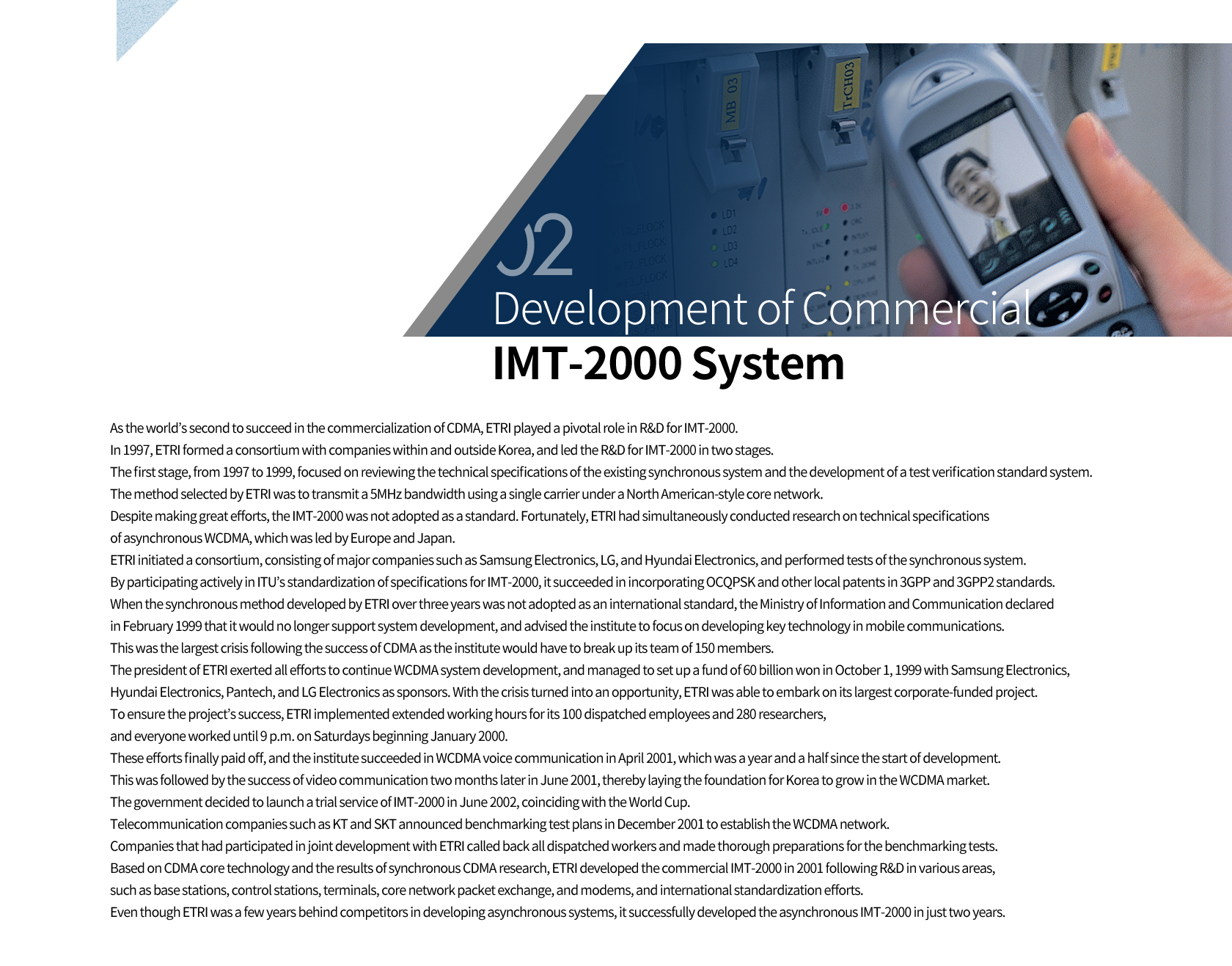
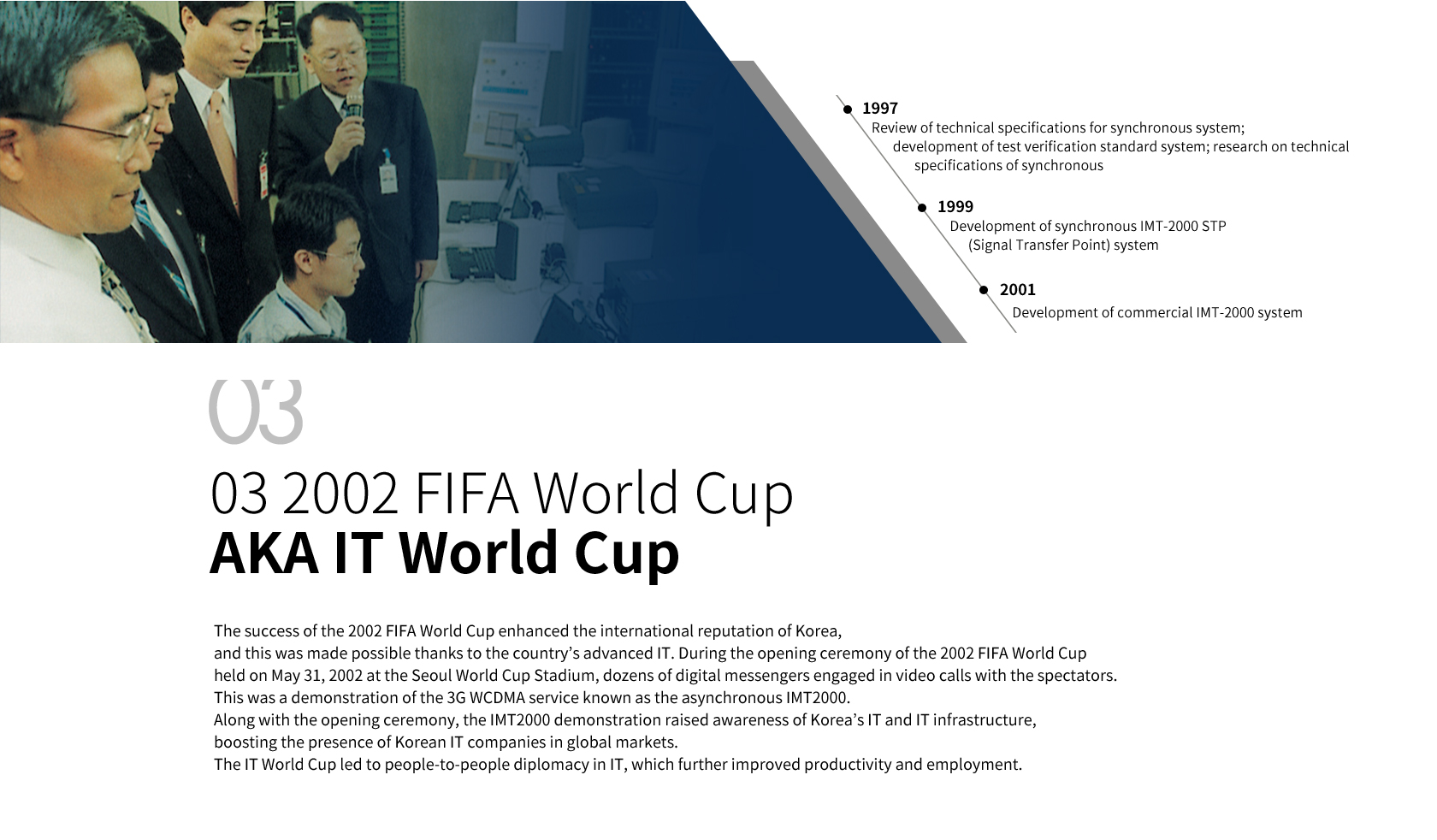
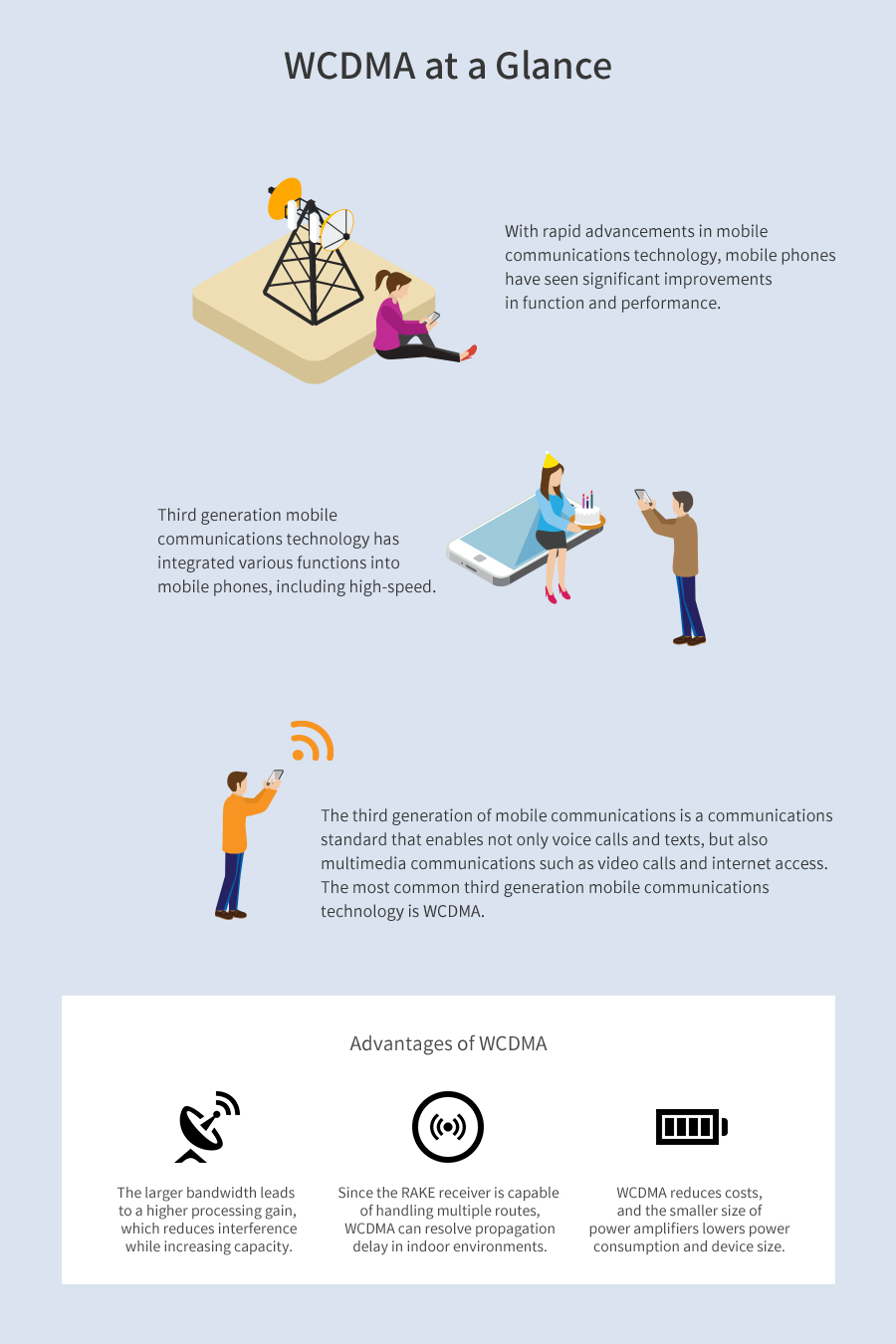
Ushering in the Third Generation
of Mobile Communications
Wideband code division multiple access (WCDMA) is a third generation mobile communications technology with a larger bandwidth and faster transmission speed than CDMA. This technology allows mobile phones to be used outside the country, and supports various multimedia functions such as video streaming, music downloads, and two-way video calls. With the widespread adoption of WCDMA technology in many countries, mobile phone manufacturers including Samsung and LG have been releasing WCDMA phones.
01
At the Forefront of
Mobile Communications
WCDMA was born amidst cooperation and competition with other countries in establishing universal communications standards. The purpose was to develop technology and establish standards for mobile phones to be used overseas.
Mobile communications developed from the analog first-generation FDMA in 1980 to the second-generation digital method in the 1990s. Depending on the method of wireless connection, mobile communications evolved into TDMA and CDMA. Korea emerged as a leader of second-generation mobile communications after becoming the first in the world to commercialize CDMA in 1996. However, it was difficult to establish an international standard between different systems such as Europe’s GSM, Japan’s PDC, and North America’s TDMA and CDMA. Other issues raised were equipment and mobility.
Roaming is necessary to ensure mobility, but the different specifications for wireless communications prevent mobile devices from being used in other regions. Moreover, high-speed data transmission was not possible due to the second generation having a slow data transmission rate of 8~64kbps. These weaknesses were resolved with the development of the third-generation IMT-2000 (International Mobile Telecommunication 2000).

02
Development of
Commercial IMT-2000 System
As the world’s second to succeed in the commercialization of CDMA, ETRI played a pivotal role in R&D for IMT-2000. In 1997, ETRI formed a consortium with companies within and outside Korea, and led the R&D for IMT-2000 in two stages. The first stage, from 1997 to 1999, focused on reviewing the technical specifications of the existing synchronous system and the development of a test verification standard system. The method selected by ETRI was to transmit a 5MHz bandwidth using a single carrier under a North American-style core network. Despite making great efforts, the IMT-2000 was not adopted as a standard. Fortunately, ETRI had simultaneously conducted research on technical specifications of asynchronous WCDMA, which was led by Europe and Japan. ETRI initiated a consortium, consisting of major companies such as Samsung Electronics, LG, and Hyundai Electronics, and performed tests of the synchronous system. By participating actively in ITU’s standardization of specifications for IMT-2000, it succeeded in incorporating OCQPSK and other local patents in 3GPP and 3GPP2 standards.
When the synchronous method developed by ETRI over three years was not adopted as an international standard, the Ministry of Information and Communication declared in February 1999 that it would no longer support system development, and advised the institute to focus on developing key technology in mobile communications. This was the largest crisis following the success of CDMA as the institute would have to break up its team of 150 members. The president of ETRI exerted all efforts to continue WCDMA system development, and managed to set up a fund of 60 billion won in October 1, 1999 with Samsung Electronics, Hyundai Electronics, Pantech, and LG Electronics as sponsors. With the crisis turned into an opportunity, ETRI was able to embark on its largest corporate-funded project.
To ensure the project’s success, ETRI implemented extended working hours for its 100 dispatched employees and 280 researchers, and everyone worked until 9 p.m. on Saturdays beginning January 2000. These efforts finally paid off, and the institute succeeded in WCDMA voice communication in April 2001, which was a year and a half since the start of development. This was followed by the success of video communication two months later in June 2001, thereby laying the foundation for Korea to grow in the WCDMA market.
The government decided to launch a trial service of IMT-2000 in June 2002, coinciding with the World Cup. Telecommunication companies such as KT and SKT announced benchmarking test plans in December 2001 to establish the WCDMA network. Companies that had participated in joint development with ETRI called back all dispatched workers and made thorough preparations for the benchmarking tests.
Based on CDMA core technology and the results of synchronous CDMA research, ETRI developed the commercial IMT-2000 in 2001 following R&D in various areas, such as base stations, control stations, terminals, core network packet exchange, and modems, and international standardization efforts. Even though ETRI was a few years behind competitors in developing asynchronous systems, it successfully developed the asynchronous IMT-2000 in just two years.
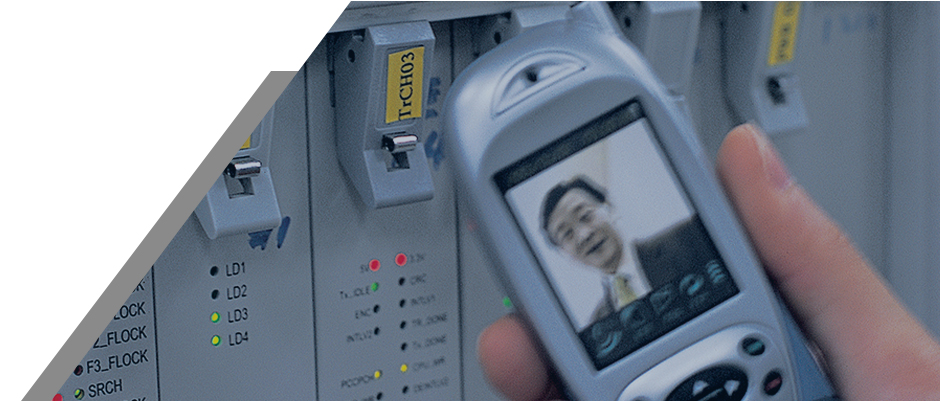
03
2002 FIFA World Cup
AKA IT World Cup
The success of the 2002 FIFA World Cup enhanced the international reputation of Korea, and this was made possible thanks to the country’s advanced IT. During the opening ceremony of the 2002 FIFA World Cup held on May 31, 2002 at the Seoul World Cup Stadium, dozens of digital messengers engaged in video calls with the spectators. This was a demonstration of the 3G WCDMA service known as the asynchronous IMT2000. Along with the opening ceremony, the IMT2000 demonstration raised awareness of Korea’s IT and IT infrastructure, boosting the presence of Korean IT companies in global markets. The IT World Cup led to people-to-people diplomacy in IT, which further improved productivity and employment.
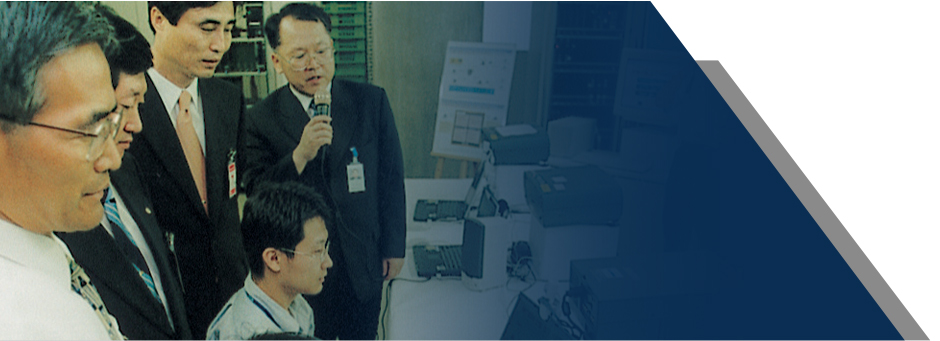
- 1997.
- Review of technical specifications for synchronous system; development of test verification standard system; research on technical specifications of synchronous WCDMA
- 1999.
- Development of synchronous IMT-2000 STP (Signal Transfer Point) system
- 2001.
- Development of commercial IMT-2000 system







